The Best Time To Visit Iceland
 Winter is the best time to visit Iceland to see the Northern Lights.
Winter is the best time to visit Iceland to see the Northern Lights.The Best Time To Visit Iceland
Iceland in the Spring
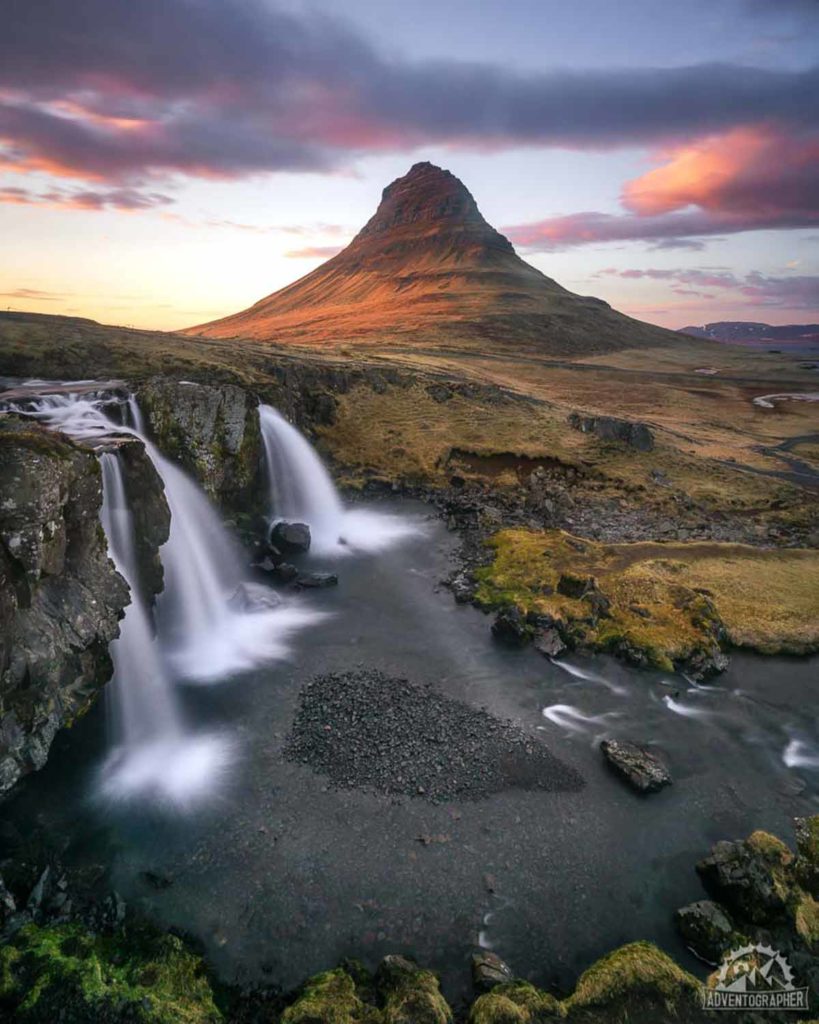 Just looking at this photo taken in Spring, you’ll surely agree that this is the best time to visit Iceland. Spring photos: Patrick Horsfield.
Spring is when Iceland starts to awake from its sub-zero slumber.
Snow melts from the lowlands and valleys while the mountain peaks remain wrapped in their wintery embrace.
Colour returns to the previously monochrome landscape and life starts returning to normal.
It’s said that spring has sprung in Iceland only once the first golden plover is spotted returning to the island.
Just looking at this photo taken in Spring, you’ll surely agree that this is the best time to visit Iceland. Spring photos: Patrick Horsfield.
Spring is when Iceland starts to awake from its sub-zero slumber.
Snow melts from the lowlands and valleys while the mountain peaks remain wrapped in their wintery embrace.
Colour returns to the previously monochrome landscape and life starts returning to normal.
It’s said that spring has sprung in Iceland only once the first golden plover is spotted returning to the island.
Tips for visiting Iceland in the spring
 There’s no best time to visit Iceland – it depends on what kind of experience you’re after.
There’s no best time to visit Iceland – it depends on what kind of experience you’re after.
- The weather can vary wildly when packing choose versatile items that can be layered!
- Bring a waterproof jacket and footwear. Even when the weather is nice, you can end up soaked from the waterfalls or groundwater!
- Plan Ahead. Not all the tourist infrastructure will be open yet, know where you plan to stay or if campgrounds are open.
Things to do in Iceland in Spring
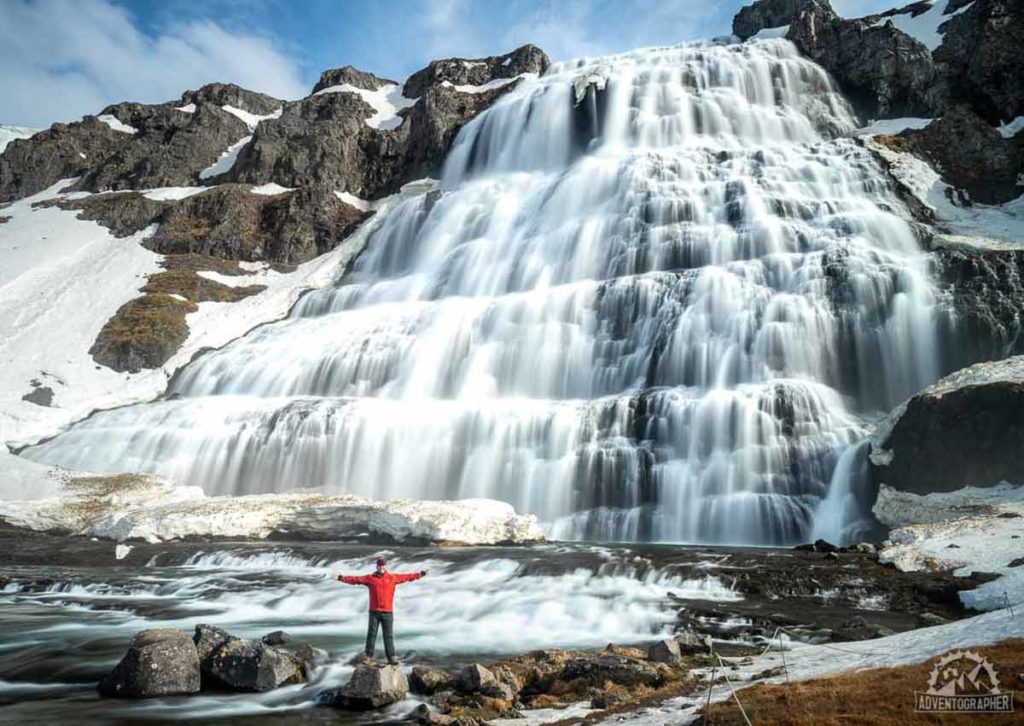
One of the best times to go to Iceland for waterfalls is in the spring. When visiting Iceland in the spring, there are a ton of activities to take part in but best of all, there are almost no lines or crowds to deal with at any of the attractions!
Visit Iceland’s waterfalls
One of my favourite parts about spring is that the Waterfalls in Iceland start running fast again. The abundance of meltwater provided by the spring sun has these amazing sights thundering. You almost feel the waterfalls rumbling well before you can even see them. It seems like Iceland has a never-ending inventory of waterfalls. A new one is hiding around every bend in the road. During our road trip around the island, I was pulling over nearly every 15 minutes to explore another. From waterfalls, you can walk behind to ones that would dwarf a cruise ship Iceland has something for everyone! If waterfalls aren’t your thing, maybe birds could ruffle your feathers.Spot puffins
Iceland is the world’s premier destination for bird watchers looking to spot puffins. This illusively solitary bird spends the vast majority of its year at sea. Spread out over an area the size of the United States they’re very rarely spotted, however, Puffins become social and return to land to breed once a year sticking around for nearly three months. Head to the sea cliffs around Vik and Dyrholaey of Iceland’s south coast for the best chance of spotting these rare birds in the wild. If you’re adventurous, you can seek one out, smoked, in one of Reykjavik’s high-end restaurants instead. A rare local delicacy, or so I was told.Iceland In Summer
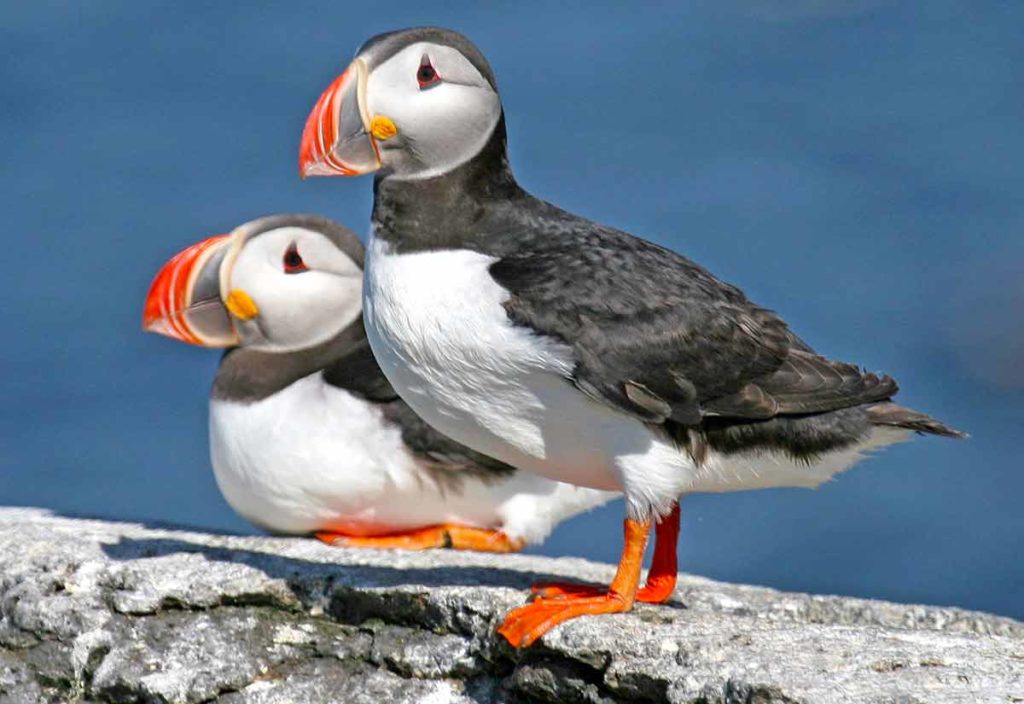
Puffins arrive in Iceland in spring, but you’ll still see them there in summer. Summertime in Iceland is likely what comes to mind when you picture visiting the country. The weather is consistently warm, tourist services are re-opened and prices go from high to higher. Sleepy fjord towns wake up, the highland roads open for travel and Iceland’s population nearly doubles from the inrush of tourists.
Tips for visiting Iceland in the Summer
- Avoid peak times! Visiting museums and other popular attractions around the country early or late will help you avoid the crowds. Remember: In the peak of summer there are nearly 22 hours of daylight to explore with!
- If you’re driving around book your rental car well in advance.
- Accommodation can be difficult to come by or outrageously expensive in peak season so plan and pre-book hotel rooms. Hotel occupancy rates jump as high as 92% in summer. Consider staying in a local home with Airbnb to save some cash and enjoy a more authentic experience.
- Camp! Iceland has an amazing network of well-serviced campsites. You can travel the ring road exploring to your heart’s content and when you’ve had enough, you simply stop at the closest campsite.
- Be Safe! While Iceland is an extremely safe & peaceful country, the Icelandic countryside sometimes isn’t. Keep back from geothermal features, don’t stray to close to cliffs and use common sense to avoid ending your trip badly.
Summer Activities in Iceland
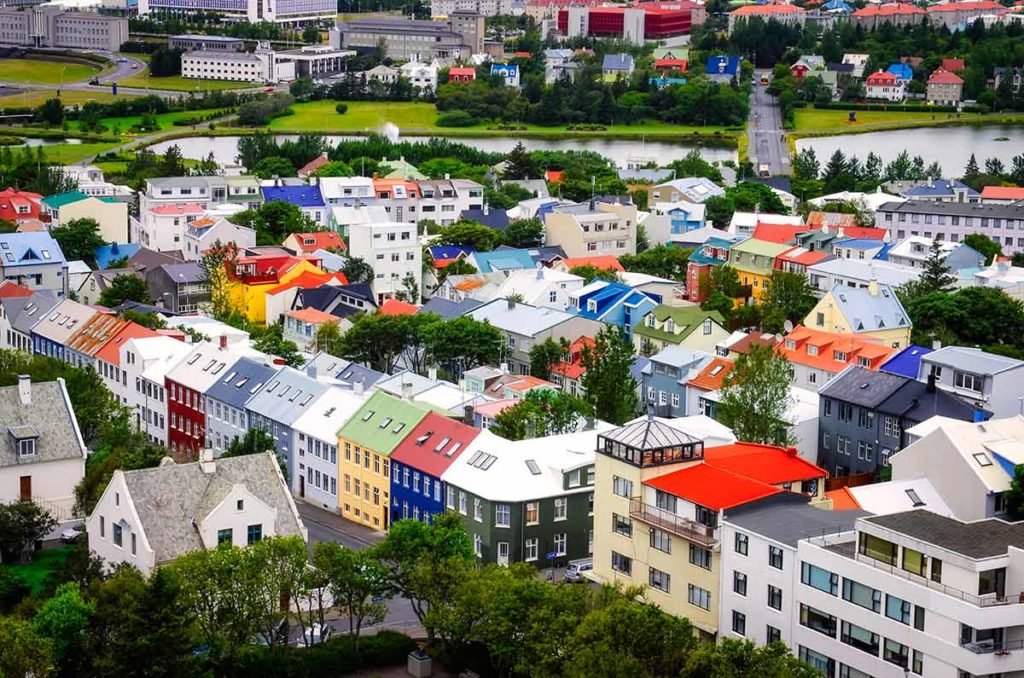 Reykjavik is a happening place in summer, which is not the best time to visit Iceland if you want to avoid crowds.
Reykjavik is a happening place in summer, which is not the best time to visit Iceland if you want to avoid crowds.
Whale watching in Iceland
Whale watching is a popular summer option and the oceans around Iceland are alive with activity. There are over 20 species of whales and dolphins in these waters. Whale watching tours are offered throughout the small communities on Iceland’s coast. Whale watching tour operators will get you up close and personal with the Orca, Minke and Humpback whales who call this area home. These operations have a nearly 100% success rate in Iceland. A few lucky tourists each year even get to see blue whales, the largest mammal on earth! The best whale-watching destination in Iceland and arguably in all of Europe is Húsavík on the island’s north coast.Drive the Ring Road
If you’re the seasick type, sticking to solid ground might be the best option, but Iceland won’t disappoint! Renting a car or campervan and road tripping around the island is a must-do in my books. You’ll get away from the flashy “tourist ready” south coast and explore the small towns and villages that give Iceland much of its charm. Route 1 (or the Ring Road) is 1300km of epic scenery and winding road. You’ll pass waterfalls, fjords, glaciers, rugged mountains, lakes and even some hot springs. We extended our trip onto the Sneafellsness peninsula & into the West and East Fjords driving a total of 4200km in our 11 days. The issue is just that Iceland has something new and beautiful to explore around every turn. While the road can be driven in two days, we’d recommend a week, or even better, two!Tour the Golden Circle Route
Even if you can’t spare a week to explore the entire Ring Road, rent a car or hop on a tour of the famous Golden Circle route near Reykjavik. The standard tour includes visits to Thingvellir national park, where Iceland’s first parliament sat, Silfra fissure where you can snorkel between the continental plates, a geothermal geyser that spouts off every few minutes and the mighty Gullfoss waterfall!Iceland In The Fall
 Iceland’s horses are amazing to see at any time of the year, however, the best time to take part in rounding them up is in fall.
With the fall come shortened days, brisker nights and a sense of calm not found in the summer.
Fall in Iceland is when the locals can finally relax.
Nearly 25% of the country’s population is employed in a tourism supporting industry.
So now, as the tourists leave the good news is that by visiting at this time of year you’ll save money. A lot of money!
Flight prices fall from their summer highs and much of the time you can find round trip airfare for less than $250.
Hotels and rental cars cost less now and even tour operators switch to an off-peak rate for tours.
Iceland’s horses are amazing to see at any time of the year, however, the best time to take part in rounding them up is in fall.
With the fall come shortened days, brisker nights and a sense of calm not found in the summer.
Fall in Iceland is when the locals can finally relax.
Nearly 25% of the country’s population is employed in a tourism supporting industry.
So now, as the tourists leave the good news is that by visiting at this time of year you’ll save money. A lot of money!
Flight prices fall from their summer highs and much of the time you can find round trip airfare for less than $250.
Hotels and rental cars cost less now and even tour operators switch to an off-peak rate for tours.
Tips for visiting Iceland in the Fall
- Be prepared with what you pack. As with travelling anywhere in the shoulder season, you’ll want to be ready for variable weather!
- Don’t try to cram too much into one day. Stops and exploring will eat up time when travelling in Iceland. Plan less to see more!
- Don’t forget your camera! The fall colours are stunning in Iceland just like anywhere else in the world!
Fall Activities in Iceland
Horseriding on the beach
There’s no better time to enjoy strolling the beach in the shadow of a volcano than the fall. Better yet, galloping across the beach aboard one of Iceland’s finest four-legged inhabitants makes for a breathtaking adventure! Icelanders are proud of their horses and rightfully so. Brought to the island more than 1,000 years ago by the Norse settlers they’ve been bred for friendliness and resilience ever since. You’ll find them surprisingly easy to ride & forgiving, even if you’re a beginner. Check out some horseriding tours here.Take part in the Rett
If riding horses isn’t your style perhaps helping round them up is? Rett is a yearly set of events where Icelanders come together to herd their animals down the rapidly freezing highlands where they’ve been grazing all summer. The Rett is a community event with a jovial atmosphere and even if you’re not helping your welcome to join in the cheer! It’s not uncommon to be invited to share a drink or meal with the locals when you stop by! With the sheep and horses moved out of the highlands, this is likely your last chance to enjoy some of Iceland’s world-class hiking before winter sets in.Hiking in the highlands
The highlands are filled with amazing hikes. From a few hours to a few days or even week-long expeditions Iceland’s backcountry offers a look into its unspoilt beauty. The area around Landmannalaugar was a favourite and should be visited if you’ve got the chance!Iceland In Winter
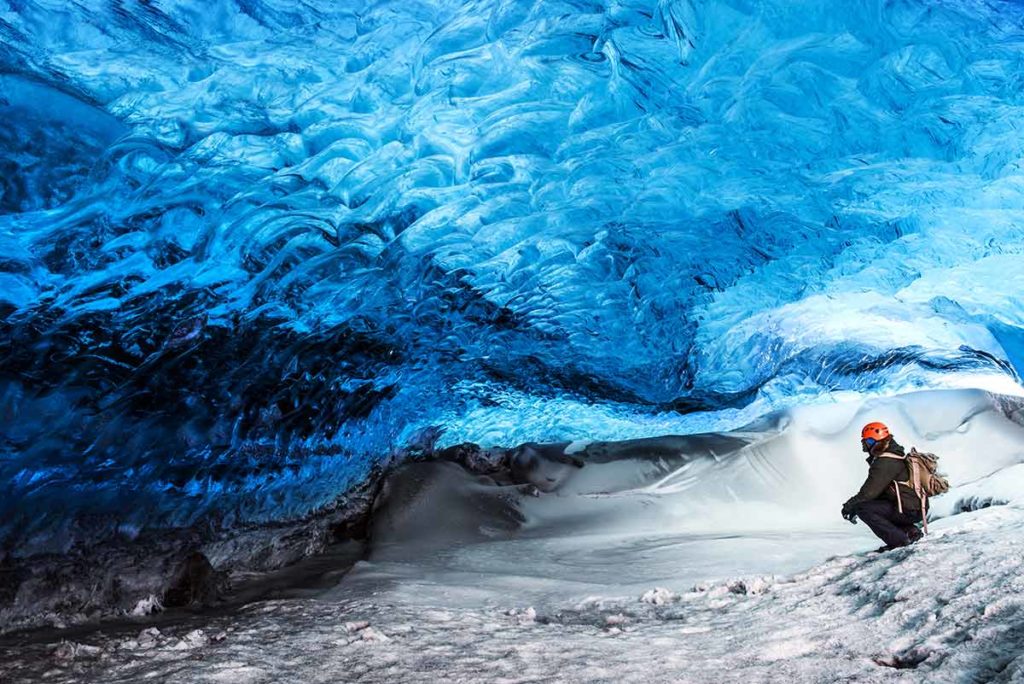 Winter is the best time to visit Iceland to explore ice caves.
The cold clutches of winter in Iceland are frigid no doubt, but that doesn’t make it any less of a good time to visit the country.
With the cold weather come clear nights that are perfect for experiencing the northern lights!
Add to this the stunning Icelandic landscapes still being accessible but capped with glistening layers of snow and you’ve got a wonderland worth exploring!
Winter is the best time to visit Iceland to explore ice caves.
The cold clutches of winter in Iceland are frigid no doubt, but that doesn’t make it any less of a good time to visit the country.
With the cold weather come clear nights that are perfect for experiencing the northern lights!
Add to this the stunning Icelandic landscapes still being accessible but capped with glistening layers of snow and you’ve got a wonderland worth exploring!
Tips for visiting Iceland in the Winter
- Stay Warm! Layers are your best friend in Iceland. It doesn’t get overly cold here (temps hover around -5C) but the consistent sea breeze will suck the heat away from you quickly. Layers allow for easy adjustments & keep you warm.
- Mind the road conditions. Winter wind & whiteouts can make driving in Iceland a difficult task. Iceland’s https://www.road.is website always has current conditions & closures available to check before leaving your hotel. Winter travel here is slow; add 25-30% of the estimated travel time to be at all accurate.
- Reykjavik has some of the world’s best Christmas and new year’s celebrations!
Winter Activities in Iceland
See the Northern Lights in Iceland
Iceland in the winter is a paradise for anyone seeking out the Northern Lights! Cold days bring with them the clear nights essential for spotting the Aurora. Keeping a close eye on Iceland’s Aurora forecast is your best tool for knowing when you should leave your cozy spot fireside to search it out! Don’t plan your entire vacation around the northern lights, however. You’ll need clear skies, a dark location and solar activity to combine for a chance at spotting them! If you’re keen on seeing the Northern Lights another phenomenon to see is the Southern Lights, which are just as beautiful and occur in the Southern Hemisphere.Soak in Iceland’s hot springs
Luckily there are plenty of other great activities during the winter in Iceland! Whether you were successful or got skunked during your northern lights mission, there’s no better way to drown your sorrows or celebrate than to find & soak in one of Iceland’s hot springs. Being a volcanic nation, Iceland is inundated with geothermal features. In the winter our favourite of those is its hot springs! Dotted across the landscape, some well-publicised but others fiercely guarded secrets, Iceland’s hot springs are a relaxing way to unwind after exploring. Hot and private, our favourite springs were those we found through the help of the locals. Chat up whoever you see, take an interest, soak up what they have to say and maybe, just maybe they’ll let you in on their favourite hotspot!Hike a glacier
Getting out on the numerous glaciers around Iceland is a great adventure for the thrill seeker. From glacier hikes to snowmobiling there’s something for everyone on these mountains of ice! My favourite activity (and one only available in the winter months) was exploring the glacier from inside. Ice caves are notoriously dangerous for nine months of the year but during the winter they become safe. Travelling down into the glacier surrounded by stunning blue ice was an experience I’ll never forget and something I’d recommend to anyone visiting Iceland in the winter!So what is the best time to visit Iceland?
The thing about Iceland is that there is no “best time” to visit. Every season has its own experiences. Compare prices of hotels in Iceland Book an Iceland tour or activity Patrick Horsfield is an internationally published Canadian travel photographer and blogger from Adventographer.com who explores the world fuelled by culture, sunsets, street food and good coffee. He writes from a wealth of travel experiences both good and bad and endeavours to create and share amazing, inspiring content from around the world as a catalyst for change with the mantra Explore.Create.Educate.
Content retrieved from: https://travel2next.com/best-time-to-visit-iceland/.
Ads go here










Comments